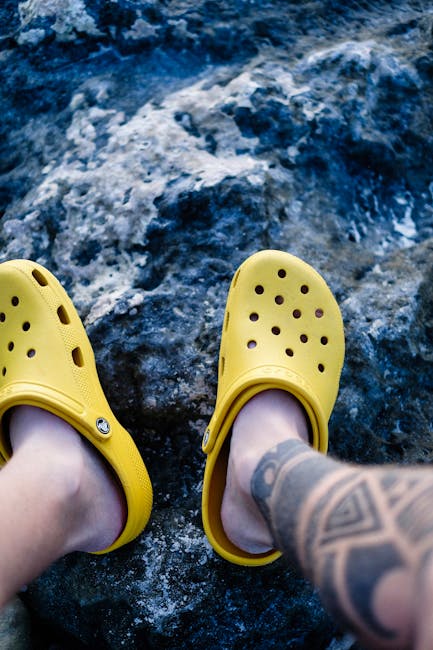Decoding the Feet Finder Salary: A Comprehensive Guide for Professionals
The term “Feet Finder Salary” might seem unusual at first glance. It’s not a standard job title, but rather refers to the compensation earned by professionals in various fields who utilize foot-related data or technology. This guide will delve into the diverse roles encompassed by this term, examining the factors influencing salary, potential career paths, and the overall job market outlook.
Understanding the Diverse Roles Under the “Feet Finder Salary” Umbrella
The term “Feet Finder Salary” is a metaphorical representation of professionals whose work involves acquiring, analyzing, or utilizing data related to feet. This broad definition encompasses roles across several industries, including:
- Podiatrists and Foot Doctors: These medical professionals provide diagnosis and treatment for foot and ankle conditions. Their salaries vary greatly depending on experience, location, and specialization. A newly qualified podiatrist might earn a significantly lower salary than a seasoned specialist in a high-demand area.
- Orthopedic Surgeons (Foot and Ankle): Surgeons specializing in foot and ankle procedures command some of the highest salaries in this realm, reflecting the complexity of their work and the high demand for their expertise.
- Biomechanics Specialists: These professionals analyze the mechanics of movement, often focusing on gait analysis and the design of custom orthotics. Their salaries often depend on their education level and the type of organization they work for (private practice vs. hospital).
- Pedorthists: Pedorthists are healthcare professionals who design, fit, and modify footwear and orthotics to improve comfort and function. Their income is influenced by their experience, location, and the type of setting in which they work (private practice, hospital, or retail).
- Footwear Designers and Engineers: Professionals in the footwear industry use their expertise in biomechanics, materials science, and design to create comfortable, functional, and aesthetically pleasing footwear. Salaries here can vary substantially based on the company’s size, reputation, and the individual’s experience.
- Researchers in Foot Health and Biomechanics: Academics and researchers involved in foot-related research contribute to our understanding of foot health and biomechanics, potentially impacting treatment and product development. Their salaries will generally depend on their educational level, research experience, and the institution they work for.
- Data Analysts in the Footwear Industry: Large companies in the footwear industry utilize data analysts to study consumer behavior, market trends, and product performance. Their salaries align with broader data analytics salary ranges but can be affected by industry-specific experience.
Factors Influencing Feet Finder Salary
Many factors play a crucial role in determining the compensation received by professionals whose work relates to feet. Understanding these factors is crucial for setting realistic salary expectations and navigating career progression.

1. Education and Experience
Formal education plays a significant role. Podiatrists and orthopedic surgeons require extensive medical training, resulting in higher salaries compared to roles requiring less formal education, such as pedorthists or footwear designers.
2. Location
Geographic location is another critical factor. Salaries in high-cost-of-living areas like major cities and coastal regions tend to be higher than in rural areas. Demand also plays a role; areas with a higher concentration of foot-related health issues or a strong footwear industry often offer higher salaries.
3. Specialization
Specialization within a field often translates to higher earning potential. For example, an orthopedic surgeon specializing in complex foot and ankle reconstruction will likely command a higher salary than a general orthopedic surgeon.
4. Industry and Company Size
The industry and size of the employer play a vital role. Professionals in large multinational footwear companies or prestigious medical facilities usually earn more than their counterparts in smaller companies or private practices.
5. Skills and Expertise
Specific skills and expertise within any given role significantly affect earnings. For example, a footwear designer with advanced CAD software skills or a biomechanics specialist with expertise in gait analysis will often command higher salaries.

Career Paths and Growth Opportunities
Many career paths are available within the “Feet Finder Salary” umbrella. Career progression often involves gaining additional certifications, specializing in a niche area, or pursuing advanced degrees.

- Podiatry: After initial qualification, podiatrists can specialize in various areas such as sports medicine, geriatric podiatry, or surgery.
- Orthopedic Surgery: Continued fellowship training in foot and ankle surgery allows for specialization in complex procedures and higher earning potential.
- Biomechanics: Continuing education in advanced gait analysis techniques or specialized software can enhance expertise and earning potential.
- Footwear Design: Experience in diverse areas like manufacturing, materials science, and design allows for growth into senior design positions or management roles.
The Future of Feet Finder Salaries
The demand for professionals with foot-related expertise is likely to remain strong. The aging population, increased awareness of foot health, and technological advancements in areas like biomechanics and footwear design are likely to drive future growth in this sector. Specialized skills and knowledge will remain highly valuable, ensuring continued demand for qualified professionals and competitive salaries.
Resources for Further Research
For individuals interested in learning more about specific career paths within the “Feet Finder Salary” category, here are some resources:
- American Podiatric Medical Association (APMA): Provides information on podiatry education, careers, and salary data.
- American Academy of Orthopaedic Surgeons (AAOS): Offers resources on orthopedic surgery education, careers, and salary information.
- American Board for Certification in Orthotics, Prosthetics & Pedorthics (ABC): Provides information on pedorthic certifications and career paths.
- Bureau of Labor Statistics (BLS): Offers comprehensive salary data for various healthcare and related professions.
This guide provides a broad overview of the “Feet Finder Salary” concept. More detailed research into specific roles and career paths is recommended for individuals seeking accurate and up-to-date salary information.

